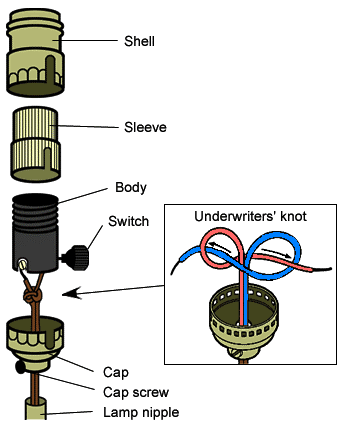That broken lamp discovered in the attic or at a neighborhood yard sale may not be ready for the junkyard. With a little patience and a few hours, it is possible to turn a nonworking lamp into a useful, functioning object of beauty once again.
Though lamps may vary in size and shape, the electrical components and the way they are wired are fundamentally the same. Components consist of a socket(s), plug, cord, and switch. A lamp that does not work usually suffers from one - or more - electrical wiring ailments affecting these components. However, problems in these areas have relatively easy remedies.
Replacing the Cord and Socket
- Unplug the lamp and remove the lightbulb.
- Cut off the old cord a couple of inches below the bottom of the lamp. With electrical tape, attach the new cord to the old one.
- Loosen the screwset below the socket cap and unthread the cap from the lamp nipple.
- Pull the new cord up through the stem of the lamp. Discard the old cord and socket.
- Slip a new socket cap over the new cord, thread the cap onto the nipple, and tighten the screwset.
- Pull the insulated, segmented 2-wire cord apart for 6 - 8 inches and tie the wires in an Underwriters' knot.
- Strip 1/2 inch of insulation from each wire. Twist the strands together, and fasten the wires to the socket screws: wrap the neutral wire (covered with ridged insulation) in a clockwise direction around the silver screw, then wrap the "hot" copper wire (covered with smooth insulation) around the brass screw.
- Pull the knot down into the cap and snap on the socket.
- Slip the insulating sleeve in place, then slide on the outer shell and position it securely in the cap.
- Your lamp is now repaired. Replace the bulb, harp, and shade and plug it in!

